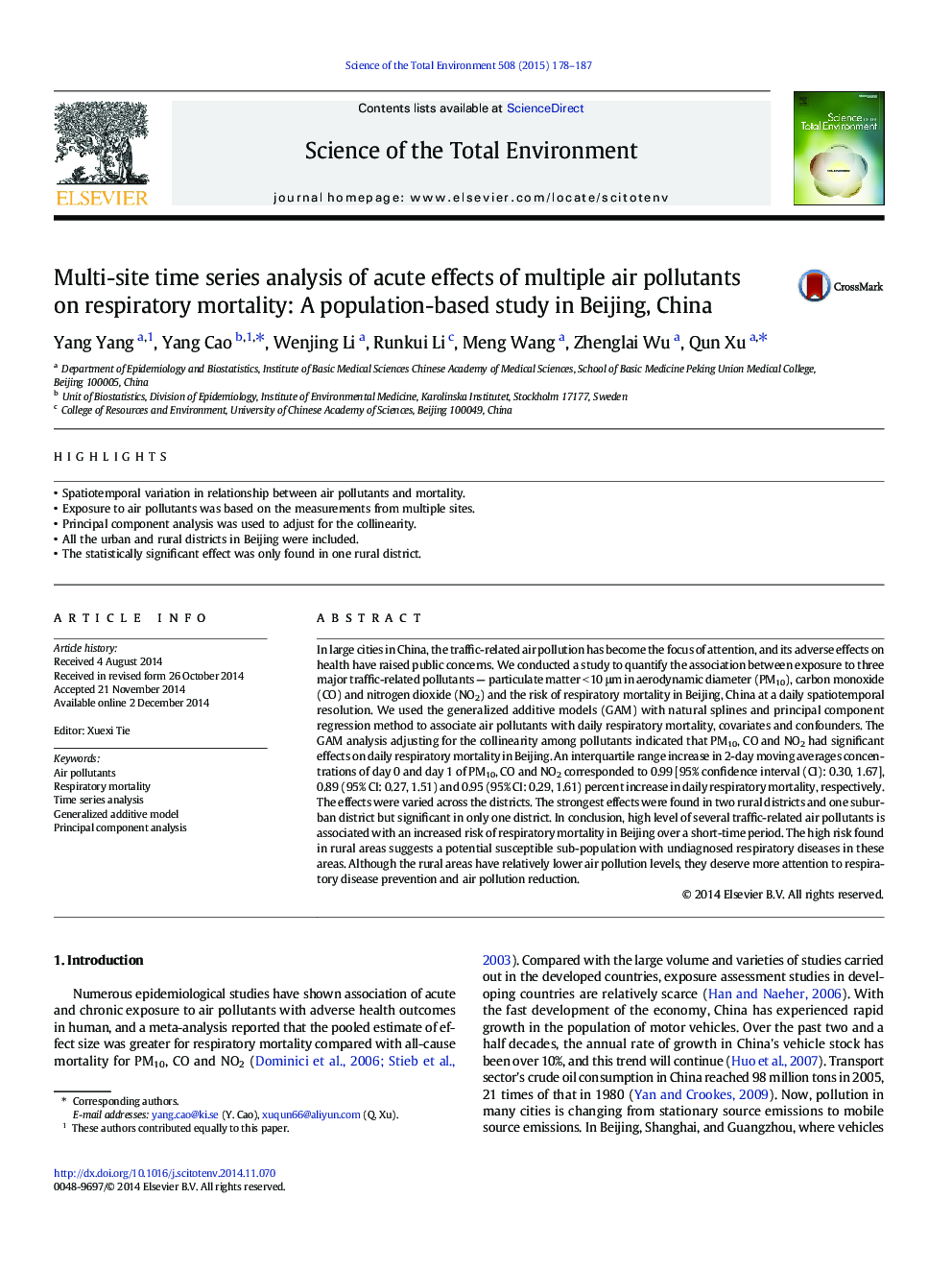| Article ID | Journal | Published Year | Pages | File Type |
|---|---|---|---|---|
| 6327851 | Science of The Total Environment | 2015 | 10 Pages |
â¢Spatiotemporal variation in relationship between air pollutants and mortality.â¢Exposure to air pollutants was based on the measurements from multiple sites.â¢Principal component analysis was used to adjust for the collinearity.â¢All the urban and rural districts in Beijing were included.â¢The statistically significant effect was only found in one rural district.
In large cities in China, the traffic-related air pollution has become the focus of attention, and its adverse effects on health have raised public concerns. We conducted a study to quantify the association between exposure to three major traffic-related pollutants - particulate matter < 10 μm in aerodynamic diameter (PM10), carbon monoxide (CO) and nitrogen dioxide (NO2) and the risk of respiratory mortality in Beijing, China at a daily spatiotemporal resolution. We used the generalized additive models (GAM) with natural splines and principal component regression method to associate air pollutants with daily respiratory mortality, covariates and confounders. The GAM analysis adjusting for the collinearity among pollutants indicated that PM10, CO and NO2 had significant effects on daily respiratory mortality in Beijing. An interquartile range increase in 2-day moving averages concentrations of day 0 and day 1 of PM10, CO and NO2 corresponded to 0.99 [95% confidence interval (CI): 0.30, 1.67], 0.89 (95% CI: 0.27, 1.51) and 0.95 (95% CI: 0.29, 1.61) percent increase in daily respiratory mortality, respectively. The effects were varied across the districts. The strongest effects were found in two rural districts and one suburban district but significant in only one district. In conclusion, high level of several traffic-related air pollutants is associated with an increased risk of respiratory mortality in Beijing over a short-time period. The high risk found in rural areas suggests a potential susceptible sub-population with undiagnosed respiratory diseases in these areas. Although the rural areas have relatively lower air pollution levels, they deserve more attention to respiratory disease prevention and air pollution reduction.
